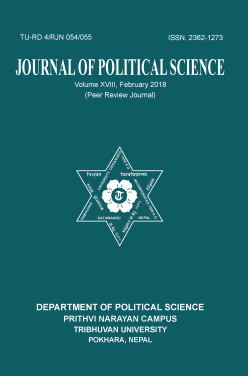Dilemma and Factionalism in the Maoist Politics of Nepal
DOI:
https://doi.org/10.3126/jps.v18i0.20436Keywords:
CPN (Maoist), Maoism, Marxism, Leninism, IdeologyAbstract
The history of the Communist movement of Nepal has passed almost 70-years since the formation of the Communist Party of Nepal (CPN) in 1949. During this period, the Communist movement of Nepal passes through so many ups and downs, twists and turns, and defeats and victories. It has taken different paths in course of its development. It has experienced series of split and merger, which still continues. The Maoist, a radical faction of the communist movement, led the armed struggle for ten-years between 1996-2006 to seizes political power and establish a “New People’s Democracy”. However, the deadly armed struggle concluded in negotiation after 10-year and Maoists re-entered in the competitive politics. As it entered in the competitive politics, the CPN (Maoist), revised its ideological goal from “New People’s Democracy” to “Democracy in the Twenty First Century”. After these ideological change, it has entered in the vicious circle of split and merger. In this context, this paper aims to understand the relations between political dilemma and fraction taken place in the history of Communist movement of Nepal in general and Maoist politics in particular. On the basis of documentary analyses, this paper argues, the whole Communist movement of Nepal including Maoists politics suffered from ideological dilemma (between liberal and radical line) that resulted internal contradiction within the movement leading toward the series of split and generated the serious crisis to radical politics in Nepal.
Journal of Political Science, Volume XVIII, 2018, page: 1-24




